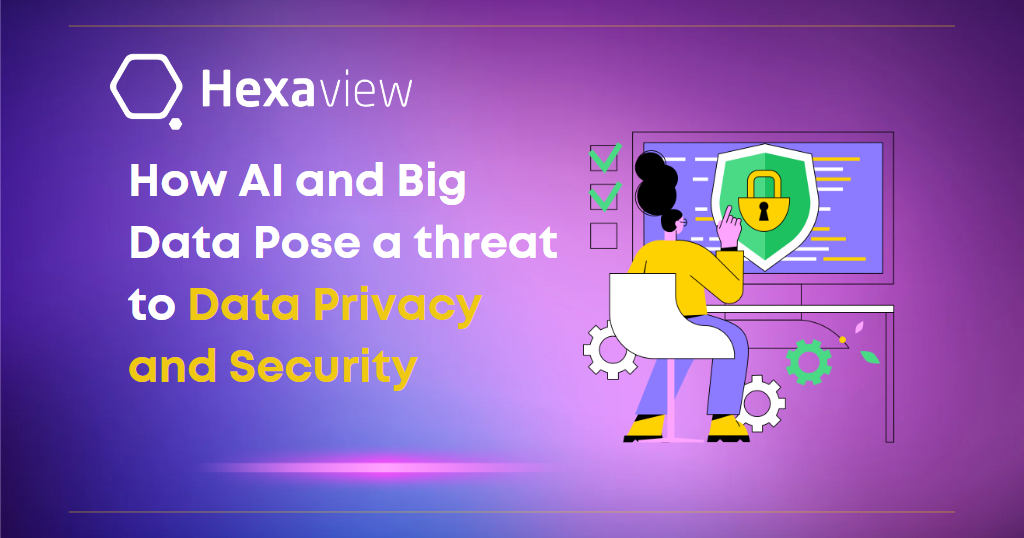Fintech
Binding seamless Technology with Finance



General Published on: Thu Feb 16 2023
The importance of data privacy and security has grown significantly as a result of the emergence of big data and artificial intelligence (AI). Data is being collected, stored, and analysed in increasing numbers due to the growth of connected devices and the Internet of Things (IoT). Products and services can be improved, predictions can be made more accurately, and business decisions are driven by this data. It is critical to note, however, that the more data is collected, the higher the risk of data breaches and other security incidents.
Data privacy and security are important in the age of AI and big data because companies are collecting more data than ever before. This data can be used to improve the accuracy of AI models, but it can also be used to make decisions about people that could have a negative impact on their lives. For example, if a company uses data from social media to target ads, it could use that data to discriminate against certain groups of people. Data privacy and security can help protect people from this type of discrimination.
In order to protect information privacy and safety, it is important to take measures to ensure that data is adequately secured. This includes implementing security protocols such as encryption and access control, as well as ensuring that only authorized individuals have access to sensitive data. Additionally, it is important to have a plan in place for how to respond in the event of a data breach. This should include steps for containing the breach, assessing the damage, and taking steps to prevent future breaches from occurring. Also, machine learning can be crucial technology in ensuring data security for example, cybersecurity systems can analyze patterns and learn from them to help prevent similar attacks and respond to changing behavior. Firms can also reach out to companies offering AI and Machine learning development services to enhance data security.
Data could be used to influence or manipulate people’s behavior in unethical ways. Another concern is that data could be leaked or stolen during a breach. If sensitive data is leaked, it could be used for identity theft, fraud, or other malicious activities. Additionally, data breaches could potentially lead to the exposure of trade secrets or other confidential information. Finally, there is a risk that data could be used to enable cybercrime. For example, data could be used to launch attacks against computer systems or to steal information. Additionally, data could be used to facilitate money laundering or other illegal activities. In cybersecurity, machine learning has emerged as a game-changing tool. AI and machine learning have the potential to make cybersecurity easier, less expensive, and more proactive. Attackers, on the other hand, will always improve their skills and technologies in order to exploit vulnerabilities. It is critical to combine today's best technologies with industry expertise in order to detect and respond to such cyber threats at the appropriate time. Machine Learning Development Company like Hexaview can help organizations to enhance security and secure the data of organization and end customers as well
Ways to Protect Information Privacy and Safety
1. Implement security protocols such as encryption and access control.
2. Ensure only authorized individuals have access to sensitive data.
3. Have a plan in place for responding to data breaches.
4. Contain the breach, assess the damage, and prevent future breaches from happening.
Security and privacy measures need to be implemented by organizations to mitigate these risks. A few of the ways in which data can be protected in transit and at rest include using encryption to protect data in transit as well as at rest, implementing access controls to ensure that only authorized individuals have access to sensitive information, and monitoring for potential security threats on a regular basis. Additionally, organizations need to be transparent about how they use and collect data. Individuals should be able to control their data, such as opting out of data collection or deleting their data, by providing clear and detailed privacy policies.
Final Thoughts
Organizations need to know the legal and regulatory requirements for data security and privacy. With the advent of big data and artificial intelligence, data privacy and security have become increasingly critical. To protect sensitive data, organizations must be aware of the risks to privacy and security. This includes using encryption, implementing access controls, and complying with legal and regulatory requirements. Furthermore, transparency and giving individuals control over their data can also be crucial to ensuring data privacy and security.

Get 30 Mins Free
Personalized Consultancy